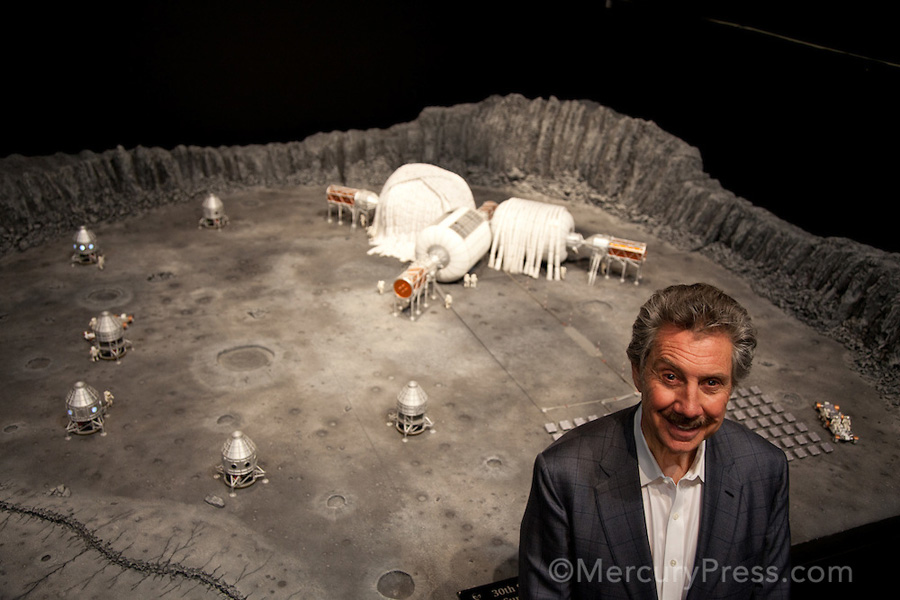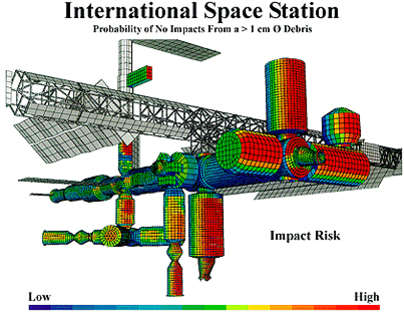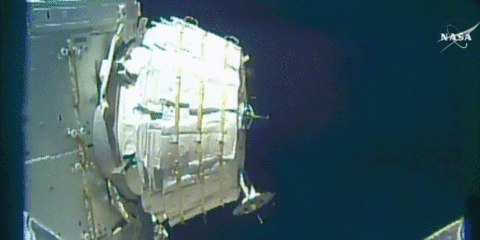American space trick

NASA demonstrated the inflated results of American private space exploration. Three and a half years ago, the private company Bigelow Aerospace received a $ 17.8 million state contract for the development of a small experimental module for the International Space Station. Two months ago, he was taken to the station, and is now prepared for test operation.
The company Bigelow Aerospace was created in 1998 by Robert Bigelow, an American businessman who made a fortune in a hotel chain. He decided that the next space hotel in near-earth orbit would be the next stage of business development. In order to fulfill his dream, he took NASA’s TransHab expandable space module technology out of archives, decided to upgrade it and begin construction. And the low near-earth orbit, in his plans, this is only the beginning, ahead - an inflatable base on the moon.

')
The technology of expandable, or simply inflatable, modules opens up some of the possibilities inaccessible to the classic structures of residential space blocks. First of all, it is an opportunity to derive more useful residential volume with a single rocket. The current modules of space stations are high-tech aluminum barrels, whose size is limited by the size of the rocket fairing, which they are displayed. So the Russian modules of the ISS in the US is precisely because of the closer fairing "Proton" compared with the cargo compartment SpaceShuttle.
The largest space module was SkyLab, with a truly huge free space.
Bigelow does not imply such liberties; in his concepts, the orbital hotel Alpha space station is divided into many residential and service compartments. Prior to NASA's state contract, Bigelow Aerospace invested $ 180 million in technology development. In total, the founder of the company is ready to send up to $ 500 million to achieve its goal.
To practice inflatable technology, the company launched two Genesis I and II test modules in 2006 and 2007.
For launches, conversion Russian-Ukrainian Dnepr missiles were used. Cameras and various sensors were installed in the modules to evaluate and track the behavior of products under vacuum conditions.
Genesis I and II are still flying, but the connection with them is no longer maintained. I think now it would be interesting to look at them in order to assess the degree of impact of space debris and meteorites. They are seen as the main problem in the implementation and operation of inflatable modules.
Of course, an inflatable space module, this is not a single-layer balloon. The design of expandable devices involves the use of multi-layered plating, each of the layers of which must provide its own function.

A layer of impregnated fabric should hold pressure. Multi-layer package of metallized films to provide thermal insulation. A layer of kevlar fabric or similar in properties should provide protection against damage during installation and operation. All together should protect from radiation and small space debris.

The exact composition of the package Bigelow does not disclose, there is only a description of a decade ago: 5 composite layers, separated by foam filler, elastic frame made of fibers, internal containment that holds the atmosphere. According to the developer, such a scheme keeps the impact of a half-centimeter piece of aluminum flying at a speed of 6.4 km / s.
BEAM protection can be compared with the European development REMSIM about which much more information . REMSIM involves the use of a five-layer Kevlar shield, which successfully stops a centimeter aluminum ball flying at a speed of 6.5 km / s.

BEAM does not use Kevlar, but Vectran, which has approximately similar properties. In addition, graphite composite layers are mentioned, which should dissipate the energy of the cosmic "bullet".
Apparently, the final design did not satisfy NASA; therefore, in the flight configuration, the plate-like “scales” additionally covered the module.

For conventional ISS modules, a similar multi-layer technology is used, based on metal sheets, called Whipple bumper.
Now several protective schemes have been developed , allowing to achieve higher resistance to collision. In addition to aluminum sheets, Kevlar layers, ceramic fibers and other materials are used. Depending on the degree of threat, elements of the space station cover up more or less.

April 8, BEAM was launched, on April 16 it was separated from the Dragon spacecraft, and docked to the ISS Tranquility module.
For more than a month, he remained in the assembled state; finally, the astronauts began to expand the module. Inflate did not work the first time. Started on May 26, and could only three days later.

Yesterday the hatch was opened, astronaut Jeffrey Williams and cosmonaut Oleg Skripochka conducted an inspection of the module, and checked the sensors. It was cold inside, but there was no condensation on the walls. In general, the condition was considered satisfactory.
BEAM will not be used in scientific or business activities of the International Space Station. Most of the time it will stay closed. It will only be dropped in four times a year, and after two years it will be poured off and dumped into the atmosphere, where it will safely burn, like an ordinary cargo ship.
The main goal of BEAM is to test the technology of expandable modules, to test their ability to maintain pressure, to resist radiation, meteorites and space debris. All two years in the module will work sensors for recording the state of the internal environment.
For NASA, this is a study of the promise of expandable technologies in space in terms of the construction of new-generation stations and interplanetary manned spacecraft. For Bigelow, this is the next stage on the path to the realization of his project of a space hotel. There is still the creation and launch of two B330 modules and the assembly of the first private space station Alpha from them. Earlier it was reported that the first BA330 will launch in 2017, but most likely, the launch will suffer.

Similar technologies are being developed in Russia at RSC Energia, but so far at the prototyping stage, i.e. like Bigelow until 2006. The Russian inflatable module of the station was canceled due to the Roscosmos budget reduction for the next 10 years.
Source: https://habr.com/ru/post/372345/
All Articles